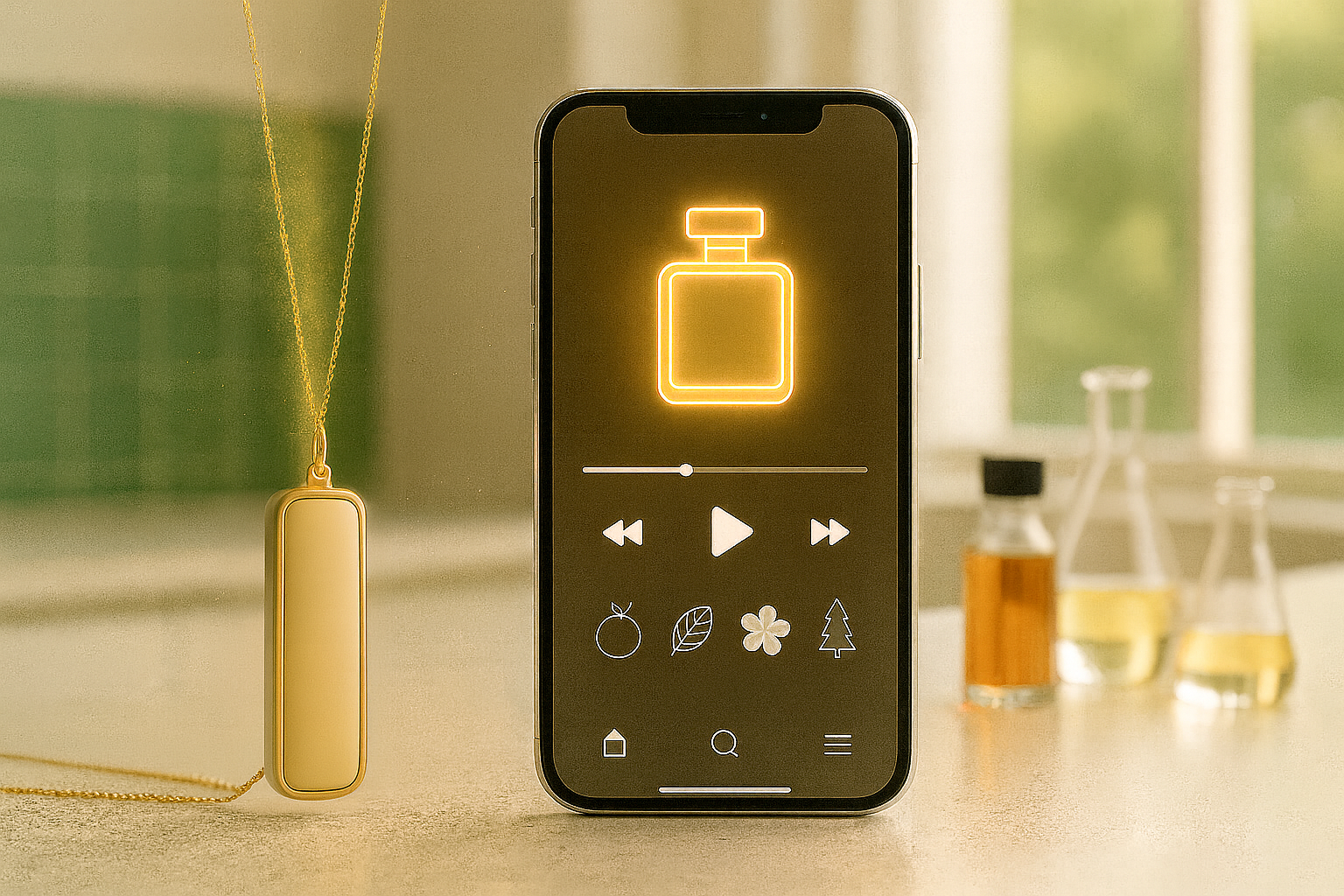From Smell O Vision to Spotify Dreams: Finding the Right Use Case for Scent Tech
When cinema gained synchronized sound in the late 1920s it transformed storytelling forever. When the Walkman arrived in 1979 music became portable and personal. With iTunes and later Spotify, it became infinite, searchable, and algorithmic.
Smell is just as invisible and just as powerful in shaping memory and emotion, but it has not yet found its Walkman or Spotify moment. Over the past century, innovators have tried to weave scent into cinema, retail, personal devices, and even the internet. The history is full of promise but also caution.
Smell O Vision and the Power of First Impressions with Scent Delivery Systems
Smell O Vision in 1960 is often dismissed as a failure, but the truth is more complicated. On opening night of Scent of Mystery, poorly ventilated air and hissing pipes caused uneven delivery, and critics ridiculed the idea. Yet when the issues were quickly fixed, reports from audiences were much more positive. Some reviewers even admired how quickly the system could change between scents using scent delivery systems.
Smell O Vision showed that people were open to scent as part of storytelling, but the damage was already done. The lesson still matters today: technical fixes can be made, but reputational failures are hard to undo.
Why Consumer Devices Struggled with E-Nose Technology and Scent Synthesizers
Since the 1990s, inventors have tried to “stream” scent the way we stream sound.
In 1999, DigiScents’ iSmell—the famous shark fin-shaped device—promised to bring scent to the internet. It blended aromas from a cartridge of “primary smells,” meant to accompany emails or web pages. The idea was visionary, but the hardware was costly and the use case too vague. DigiScents shut down in 2001 despite raising millions.
Other attempts followed. TriSenx’s Scent Dome used multiple cartridges to release odors linked to online games or media. In Japan, Kaori Web connected internet cafés to scent emitters. In the 2010s, oPhone and its follow-up Cyrano tried to do for smartphones what iSmell had tried for PCs. Cyrano plugged into the phone and played “scent playlists” triggered by an app. Both drew media attention but failed to capture consumers.
Compoz Paris entered later with a high-design home diffuser that blended scents in the air. It was elegant but expensive and too complex for mainstream adoption.
Most of these devices fizzled for the same reasons. They did not solve a daily problem. They required cartridges and upkeep. They offered smells in the air, but not the personal transformation people associate with wearing perfume. And they underestimated how difficult it is for most people to navigate olfactory space, including olfactory technology and scent synthesizers.
There are exceptions. Pura has managed to scale, not by reinventing scent but by making the plug-in diffuser smarter, more design-driven, and connected to an app. In the mass market, simplicity and convenience still matter most.
Retail and Hospitality: A Plateau in Ambient Scent and Virtual Reality Scent Integration
Retail and hotel scenting might look like a success story, but in practice it has plateaued. AirParfum, Puig’s system for sampling perfumes without fatigue, has not scaled beyond flagships and pop ups. It is expensive and custom built, and retailers are skeptical about the returns.
Hotels and branded spaces mostly rely on the same providers, recycling a narrow palette of White Tea, woody ambers, and clean musks. The diffusion is often turned up too high, partly to ensure it is noticed, partly to burn through cartridges faster. Instead of subtle design, many lobbies and stores smell generic and overwhelming. Airports and malls have pulled back for the same reason.
There are elegant examples, but they are exceptions. For now, retail and hospitality scenting is a niche business with high margins and limited imagination.
Health and Diagnostics: A Different Road Using Olfactory Tests and Olfactory Training
One of the most intriguing frontiers for scent is not entertainment or branding, but medicine. Sony has developed a clinical olfactometer that can deliver odors with precision to measure smell acuity, already used in research on Parkinson’s and dementia, as part of olfactory tests and olfactory training programs. The University of Pennsylvania Smell Identification Test remains one of the most widely validated tools, and yet even today it is reimbursed by insurance only in Japan.
Startups like Owlstone Medical and Aryballe are building sensors that analyze volatile compounds in breath for early disease detection or food safety. But medical diagnostics is not a fast road. It comes with hurdles of regulation, validation, and adoption. Unlike consumer products, these technologies must prove reliability at clinical scale before they can reach patients.
Still, the potential is enormous. Smell could become a standard part of health monitoring, as central to preventive care as blood pressure or heart rate.
Where the Next Breakthrough Might Come From in Olfactory Technology
The more immediate future lies in personalization and context. Companies like OVR Technology, which once leaned into wellness and VR, are now focusing on gaming. AI fragrance platforms like Osmo are beginning to map molecules to odor perception, creating libraries that could power new forms of design and discovery.
Imagine scent environments that adapt to time of day, mood, or stress levels. Wearables that trigger scent shifts based on biometric signals. Homes and offices where fragrance playlists update as seamlessly as Spotify mixes.
The question is not whether scent can become programmable. The question is which use case will finally unlock adoption. History shows that people are willing to embrace scent innovation, but only when it solves a real problem or adds clear value. That is the challenge and the opportunity that will define the future of smell.

